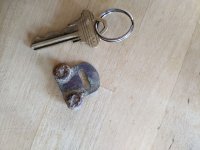able_walker
Jr. Member
- Jun 25, 2007
- 88
- 15
There are a few out there...Anyone have a favorite?.....This one is the stuff of legend for sure.
The Elusive Tomb of Alexander - Archaeology Magazine Archive
The Elusive Tomb of Alexander - Archaeology Magazine Archive


















